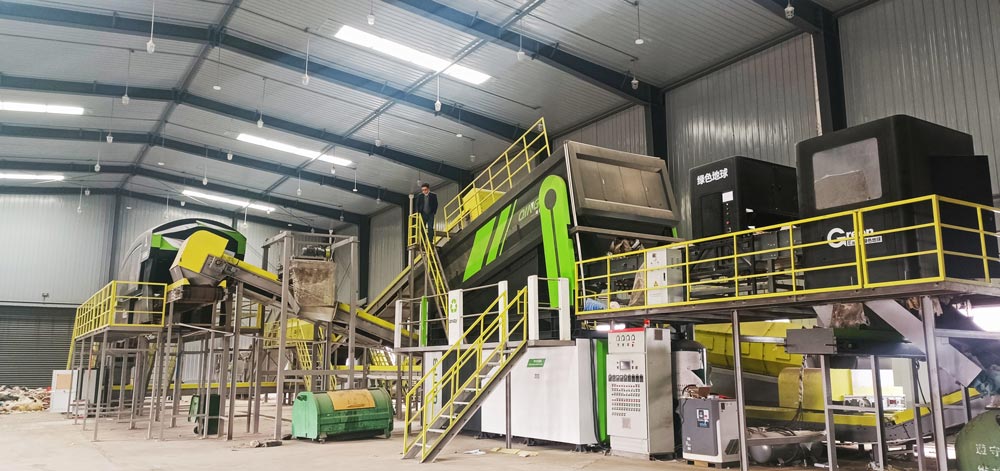 Time:2025-04-23
Time:2025-04-23
 Source:青绿环境
Source:青绿环境
With the acceleration of urbanization and the improvement of living standards, the volume of bulk waste is increasing day by day. How to effectively deal with this type of waste has become one of the important issues that urban development faces. The emergence of bulk waste sorting and processing equipment provides an effective solution to this problem.

Bulk Waste Sorting Equipment
Bulk waste mainly includes discarded household and office furniture, such as bed frames, mattresses, sofas, tables and chairs, and wardrobes (bookcases), etc. These items are large in volume and have a strong integrity. Direct disposal not only occupies a large amount of space but also causes serious environmental pollution. Traditional methods of handling bulk waste are often inefficient and cannot meet the demands of modern society. Modern bulk waste sorting and processing equipment integrates multiple functions such as disassembly, shredding, and photoelectric sorting, achieving the effective transformation of waste into resources.
Disassembly: The First Step
Disassembly is the first step in the processing. With specialized tools and techniques, bulk waste is broken down into smaller parts for subsequent treatment. For example, for an old sofa, the outer fabric can be stripped first, and then the internal springs and wooden frames can be separated. This step requires operators to have certain skills while ensuring safety.
Shredding: Reducing Waste Volume
After disassembly, the smaller pieces of waste are fed into a shredder for crushing. The shredder can adjust parameters according to the material properties to ensure that various types of waste are effectively crushed to the appropriate size. This significantly reduces the volume of waste, improving transportation and processing efficiency. For instance, hard wooden boards or metal structures are turned into manageable small fragments after shredding.
Photoelectric Sorting: The Core Technology
The next step is photoelectric sorting, which is one of the core technologies in the entire process. Photoelectric sorting equipment can identify fragments of different materials and classify them for collection using air currents or other physical methods. For example, metal fragments, with their unique optical properties, are sorted out separately for recycling. Similarly, wood, plastic, and other materials are also processed accordingly.
Resource Recovery and Environmental Benefits
Through the above series of processing steps, useful materials in bulk waste are reintroduced into the production chain. Metals can be used to manufacture new metal products; wood can be processed into biomass fuel or recycled panels; and plastic can be transformed into new plastic products. This not only reduces the extraction of natural resources and the environmental burden but also promotes the development of a circular economy. In summary, bulk waste sorting and processing equipment is an indispensable force in driving urban sustainable development.













 Prev
Prev











